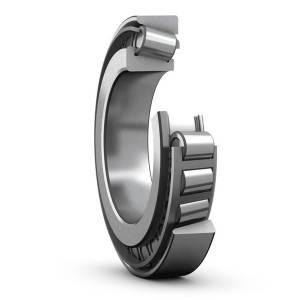Roll bearings are fundamental components in a wide array of machinery, from industrial equipment to automotive applications. These precision-engineered parts are designed to support loads and reduce friction, ensuring smooth and efficient operation. However, like any mechanical component, roll bearings require regular maintenance to function optimally and achieve their full lifespan. In this article, we will discuss the essentials of roll bearing maintenance, highlighting key practices that help prevent failures, extend service life, and ensure the reliability of your machinery. As a leading provider of high-quality bearings, “Xinri Bearing” is committed to helping customers maintain their equipment with top-tier products and expert advice.

The Importance of Roll Bearing Maintenance
Proper maintenance of roll bearings is crucial for several reasons:
- Prevention of Bearing Failure
- Bearing failure can lead to significant downtime, costly repairs, and even damage to other parts of the machinery. Regular maintenance helps identify and address issues before they lead to failure, ensuring continuous operation.
- Extended Bearing Life
- Well-maintained bearings last longer, reducing the frequency of replacements and lowering overall maintenance costs. Bearings that receive proper care can achieve or even exceed their expected lifespan.
- Optimized Machine Performance
- Bearings play a critical role in the efficiency of machinery. By minimizing friction, they contribute to smoother operation, lower energy consumption, and reduced wear on other components. Regular maintenance ensures that bearings continue to perform at their best.
Key Maintenance Practices for Roll Bearings
To maximize the performance and lifespan of roll bearings, it’s essential to follow these key maintenance practices:
1. Regular Inspection
Routine inspections are the cornerstone of effective bearing maintenance. These inspections should include:
- Visual Checks: Regularly inspect bearings for signs of wear, corrosion, or damage. Look for any discoloration, pitting, or scoring on the bearing surfaces, as these can indicate potential issues.
- Noise and Vibration Monitoring: Unusual noise or vibration during operation can be an early sign of bearing problems. Use vibration analysis tools to detect any deviations from normal operating conditions.
- Temperature Monitoring: Excessive heat is a common indicator of bearing issues. Regularly monitor the temperature of bearings during operation to ensure they are within the recommended range. Xinri Bearing’s products are designed to operate efficiently at temperatures ranging from -20°C to 120°C, depending on the application.
2. Proper Lubrication
Lubrication is critical for reducing friction and preventing wear in roll bearings. The type and amount of lubricant used can significantly impact bearing performance:
- Choose the Right Lubricant: Use the appropriate lubricant for your specific bearing application. For example, grease is commonly used for slower, heavier loads, while oil is preferred for high-speed applications.
- Regular Re-Lubrication: Bearings require periodic re-lubrication to maintain optimal performance. The re-lubrication interval depends on the operating conditions, such as speed, load, and temperature. For instance, Xinri Bearing recommends re-lubricating every 2,000 to 8,000 operating hours, depending on the specific application.
- Avoid Over-Lubrication: Over-lubricating can cause excess heat and increase the risk of bearing failure. Always follow the manufacturer’s guidelines regarding the correct amount of lubricant to apply.
3. Alignment and Mounting
Proper alignment and mounting of bearings are essential to prevent premature wear and failure:
- Ensure Correct Alignment: Misalignment of bearings can lead to uneven load distribution and increased stress on the bearing components. Use alignment tools to check and adjust the alignment of the shaft and housing regularly.
- Proper Mounting Techniques: Incorrect mounting can cause damage to the bearing and reduce its lifespan. Use the recommended mounting tools and techniques, such as hydraulic or mechanical presses, to install bearings without causing distortion or damage.
4. Cleanliness and Contamination Control
Contamination is one of the leading causes of bearing failure. Even small particles of dirt or debris can cause significant damage to the bearing surfaces:
- Keep the Environment Clean: Ensure that the area around the bearing is kept clean during installation and maintenance. Use protective covers or seals to prevent contaminants from entering the bearing.
- Proper Handling: Avoid touching the bearing surfaces with bare hands, as oils and dirt can transfer to the bearing and cause contamination. Use clean gloves and tools when handling bearings.
Conclusion
Roll bearing maintenance is essential for ensuring the longevity, reliability, and performance of your machinery. By following key maintenance practices such as regular inspection, proper lubrication, correct alignment, and contamination control, you can significantly reduce the risk of bearing failure and extend the service life of your bearings. At Xinri Bearing, we understand the critical role that bearings play in your operations, which is why we are committed to providing high-quality bearings and expert support to help you maintain your equipment. By prioritizing maintenance and using reliable products from Xinri Bearing, you can keep your machinery running smoothly and efficiently for years to come.
Product: Double Row Tapered Roller Bearings , Single Row Cylindrical Roller Bearings
Post time: Aug-13-2024


